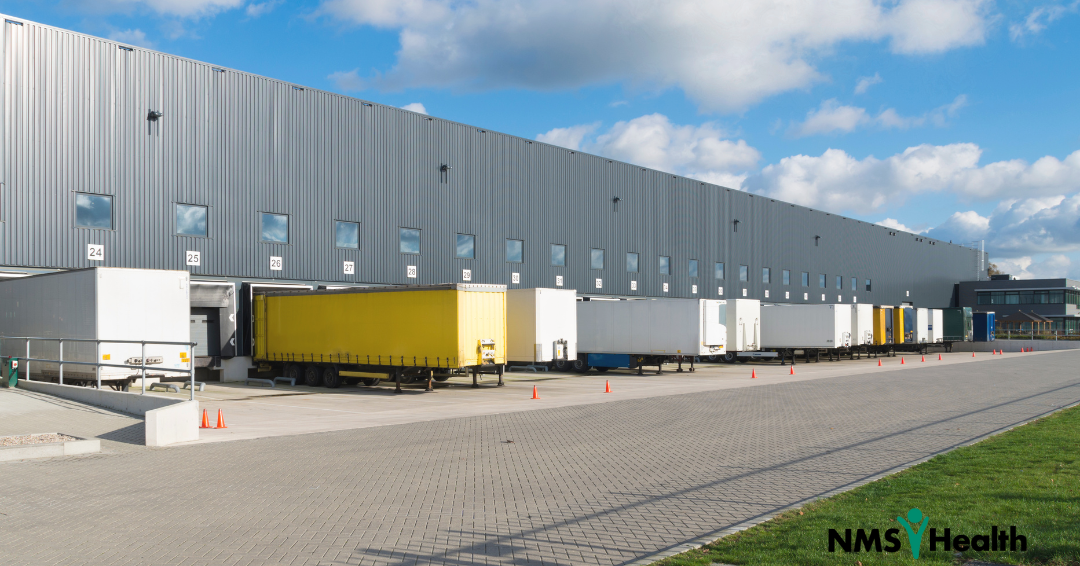The e-commerce boom has revolutionized how we shop, offering convenience with just a simple click. However, this growth comes with an overlooked price: deteriorating air quality, resulting in major health risks for communities near warehouses. A recent study sheds light on how the expansion of warehouses across the U.S. is worsening air pollution, adding strain to areas that are already grappling with environmental and health challenges.
The Warehouse Explosion
The demand for rapid deliveries has led to a surge in the construction of warehouses all over the United States. This growth has been further fueled by the COVID-19 pandemic, which has significantly boosted e-commerce activities. As a result, truck traffic around these warehouses has substantially increased. In 2021, Amazon alone employed 175,000 delivery vans and over 37,000 semi-trucks to meet the rising demand for online shopping. With the establishment of each new warehouse, there is a notable uptick in truck traffic as products are constantly being transported in and out of these facilities. This heightened activity has led to a rise in air pollution. Particularly from diesel trucks, as they emit nitrogen dioxide (NO2) and particulate matter, impacting the surrounding environment.
Key Findings
- Nationwide Impact: Nearly 150,000 warehouses are located across the contiguous U.S., contributing to a nearly 20% increase in local NO2 levels. The density of warehouses and their capacity to handle truck traffic, such as the number of loading docks and parking spaces, increases NO2 levels.
- Geographic Concentration: Although warehouses are spread across the United States, 20% are concentrated in just ten counties. This includes Los Angeles, California; Harris, Texas; Cook, Illinois; and Miami-Dade, Florida.
- Environmental Inequity: The study underscores that warehouses are predominantly located in areas inhabited by marginalized and minoritized communities, including Hispanic, Black, Asian, Native Hawaiian, and Pacific Islander populations. These communities, already burdened by various socio-economic challenges, now face heightened health risks due to increased air pollution.
- Traffic and Pollution Correlation: The study found a direct correlation between truck traffic near warehouses and increased NO2 levels. More loading docks and parking spaces in warehouses attract higher truck traffic, leading to greater air pollution.
Health Implications for Communities Near Warehouses
Nitrogen dioxide (NO2), a harmful air pollutant, forms from nitrogen and oxygen. It is part of a group of pollutants known as nitrogen oxides (NOx). Breathing in NO2 can cause irritation to the respiratory system. According to the American Lung Association, long-term exposure poses significant health risks, including:
- Increased airway inflammation
- Worsened cough and wheezing
- Reduced lung function
- Increased asthma attacks
- Higher risk of emergency room visits and hospital admissions
Research has linked elevated NO2 levels to various health problems. This includes cardiovascular and respiratory damage, poor pregnancy and birth outcomes. Increased risks of kidney and neurological issues, autoimmune disorders, and cancer also cause concern.
Policy and Corporate Responsibility
Addressing the environmental and health impacts of warehouses necessitates a multifaceted approach involving both policy and corporate action:
- Regulatory Measures: Implementation of indirect source rules that hold warehouse operators accountable for emissions associated with their logistics activities can significantly reduce pollution levels.
- Electric Vehicle Incentives: Promoting the adoption of electric trucks can mitigate the emissions from diesel-powered vehicles, leading to cleaner air in affected communities.
- Enhanced Monitoring and Reporting: Establishing rigorous monitoring protocols can provide detailed data on pollution levels, enabling more targeted and effective regulatory interventions.
Community Advocacy and Action
Community groups play a vital role in addressing this issue. Organizations like the Sierra Club and the Center for Community Action and Environmental Justice (CCAEJ) work tirelessly to raise awareness, advocate for stronger regulations, and hold polluters accountable. Their efforts ensure that affected communities’ voices are heard and that they receive the support they need.
The rapid growth of warehouses driven by the e-commerce boom presents a complex challenge. While these facilities meet consumer demand, we cannot ignore their environmental and health impacts. study’s findings underscore the urgent need for action to protect vulnerable communities from the harmful effects of increased pollution.
Striking a balance between economic growth and environmental health is crucial. Through stricter regulations, adopting cleaner technologies, and advocating robustly within communities, we can mitigate the negative impacts of warehouse proliferation. By addressing these issues now, we can work towards a future where economic benefits do not come at the expense of public health, ensuring cleaner air and healthier lives for all communities.
Ready to elevate your workforce’s health? Partner with NMS Health for your occupational health screenings. With NMS Health, you are not just identifying and preventing future illness; you’re investing in a safer, healthier future for your team. Get started today!


